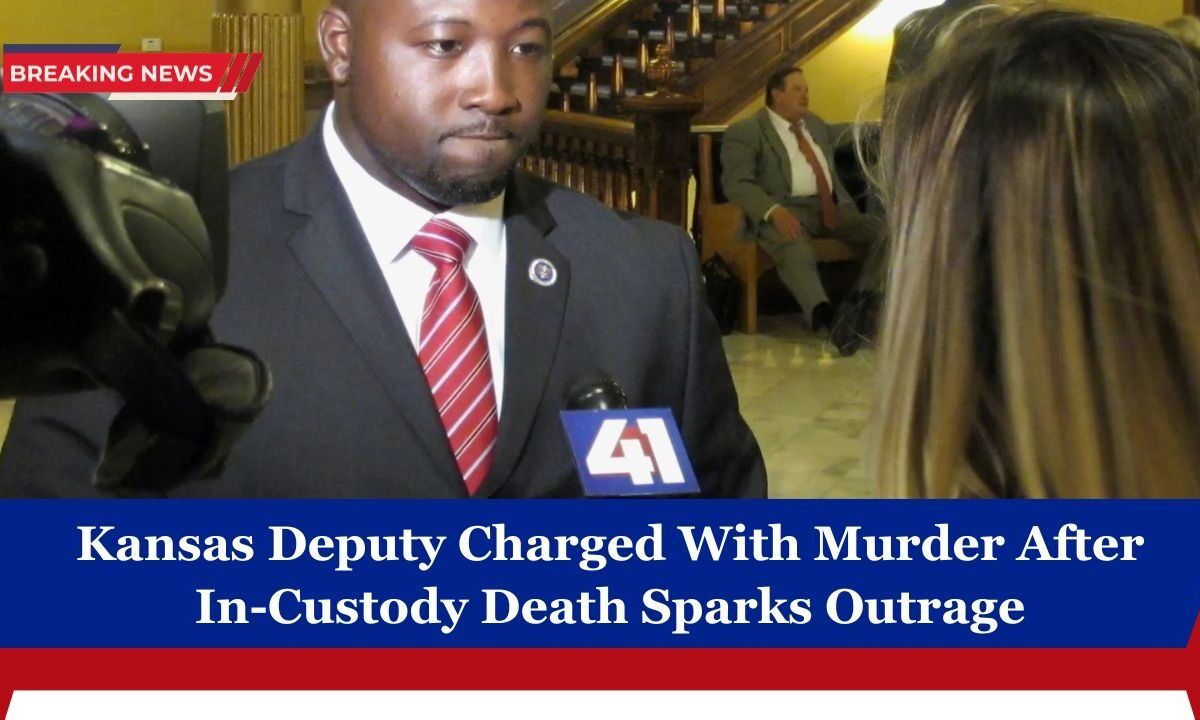A Wyandotte County sheriff’s deputy, Richard Fatherley, has been charged with second-degree murder and an alternative count of involuntary manslaughter following the in-custody death of 50-year-old Charles Adair at the county detention center.
The case has ignited public outcry and renewed scrutiny over use of force in jails and the treatment of inmates.
Autopsy findings, legal proceedings, and reactions from family and advocacy groups have all contributed to growing demands for transparency and accountability.
Key Facts & Figures
| Item | Details |
|---|---|
| Victim | Charles L. Adair, 50, Kansas City, Kansas |
| Arrest Date | July 4, 2025 — arrested on misdemeanor warrants for failure to appear on multiple traffic violations |
| Date of Death | July 5, 2025 |
| Location | Wyandotte County Detention Center, Kansas City, Kansas |
| Charged Officer | Deputy Richard Fatherley — not a certified law enforcement officer; on paid administrative leave |
| Charges | * Second-degree murder * Alternative: involuntary manslaughter |
| Autopsy Ruling | Manner of death: homicide; Cause: complications from mechanical asphyxia with contributing factors including cardiovascular disease & cirrhosis due to chronic alcoholism |
| Physical Injuries | Multiple broken ribs, sternal fracture, bruising (muscle hemorrhage) on back/shoulders, internal bleeding |
| Timeline | • ~8:30 p.m. – Adair treated in infirmary for leg wound • Time after transfer, altercation occurs • By 8:37 p.m. – unresponsive in cell • Pronounced dead ~9:19 p.m. |
| Legal Status of Deputy | Summoned to court (not arrested), expected to appear; not booked into jail; cooperating with investigation |
| Sentencing Potential | Up to 41 years imprisonment for second-degree murder; up to 11 years for involuntary manslaughter |
| Family & Advocacy | Family seeking release of body cam / cell-block / video footage. Group “Justice for Wyandotte” involved. |
What Happened According to Reports
- Pre-existing Condition & Custody: Adair was arrested for misdemeanor traffic violations and brought to the detention center. He had a wound on his leg and was treated in the jail infirmary.
- Transfer and Restraint: When staff attempted to return him to his cell (by wheelchair), an altercation ensued. Deputies handcuffed Adair. He resisted while being transported and in his cell while handcuffs were being removed. At some point one officer knelt on his back.
- Autopsy Findings: The autopsy identified mechanical asphyxia—breathing obstruction—as the primary cause of death. Contributory health issues included cardiovascular disease and hepatic cirrhosis due to chronic alcoholism. Injuries include broken ribs, a fractured sternum, muscle hemorrhage, and bruising. The manner of death is homicide.
- Legal Moves: Prosecutors charged Richard Fatherley. They did not confirm whether he was definitely the person who applied the knee restraint, but stated that no one else will be charged. A summons was issued rather than arrest. Fatherley is on administrative leave.
- Public & Family Reaction: Adair’s brother and advocacy group demand video evidence showing the final moments. The sheriff’s office declined initial records requests; prosecutor states video will be reviewed in court during preliminary hearings.
- Defense Statement: Fatherley’s attorney argues the second-degree murder charge requires proof of extreme indifference to life, which they say is not met. The involuntary manslaughter charge is an alternative and requires proving recklessness rather than intent. The defense maintains Fatherley acted within scope of duties.
Legal, Ethical, & Policy Implications
- The use of restraint techniques, especially kneeling or pressure on the back, raises serious concerns over mechanical asphyxia and risks of death.
- The delay or refusal to release video footage has increased distrust among family members and public.
- The case adds to wider debates about standards of force in detention centers, certification of deputies, training, and oversight.
- Comparisons are being drawn to previous cases where asphyxia in restraint led to deaths (for example, the George Floyd case) and whether legal doctrines (such as stand-your-ground or use of force protections) apply.
The case of Charles Adair’s death in custody has become a flashpoint for calls for greater accountability and reform in how corrections deputies and jail staff use force, especially on vulnerable individuals.
With charges now filed, key questions remain about exactly who applied the fatal restraint, what video evidence exists, and how Adair’s preexisting health conditions may have magnified the tragedy.
As the legal process moves forward, transparency, due process, and oversight will be critical for justice, family closure, and public trust.



